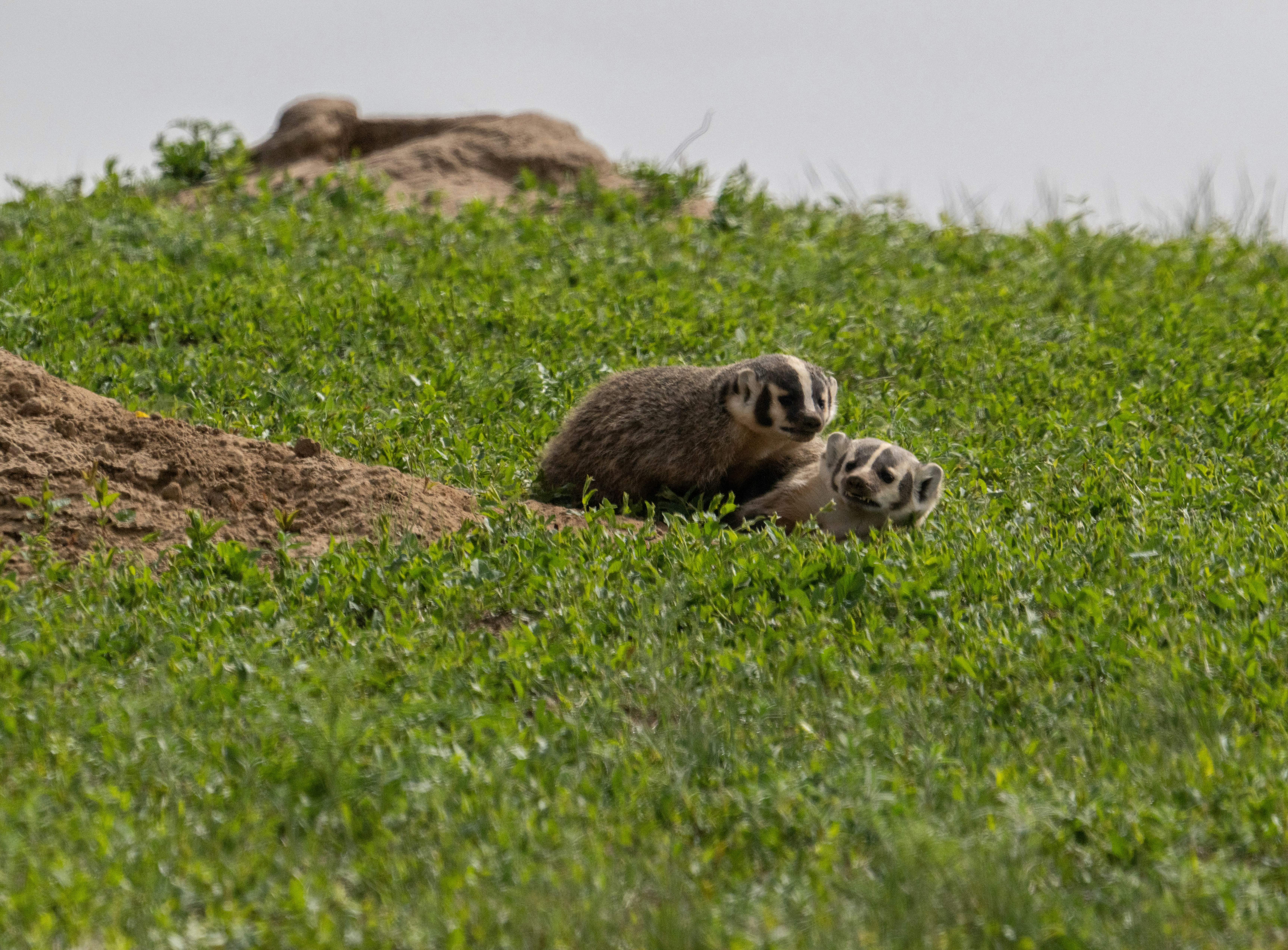Take a look at what I've been working on!

American Badger Project
Researchers are trying to find ways to lower mortality rates of the American Badger by figuring out the strategies needed for road mitigations (Sunga et al. 2016). Even though some badgers have been spotted using animal tunnels and some have learned to look both ways before crossing the highway or freeway roads like humans, there must be some management for developing safer crossings for these endangered animals.

Whales of Big Sur Project
There are two different species of gray Whales, the western and eastern gray whales. They were once in the millions thriving throughout both the Pacific and Atlantic Oceans until whalers and hunters killed most of them into extinction during the 17th and 18th centuries in European coastlines. The western gray whales are found along the eastern coasts of the asian continent and are fewer than 200 due to whaling, loss of habitat, as well as pollution from large urbanized nations. Noises from large ships are an interference with their echolocations for finding other whale individuals or finding their prey at the ocean floor and surface.

Impacts of Microplastics
Microplastics have not only been found in some of the foods we eat, but the ecological food webs in our oceans are becoming saturated with microplastics. With microplastics damaging and destroying red blood cells, this can lead to insulin resistance which follows up with the diagnosis of type 2 diabetes. Cancers and other diseases are being accused by microplastics in our bodies, but there still needs to be more research to support that statement.

Human Impacts on the Ohlone Tiger Beetle
The Ohlone Tiger Beetle has faced many recreational activities such as mountain biking and large group hikes (Arnold and Knisley 2018). Having fewer people in the grasslands and coastal prairies puts less stress on the Ohlone Tiger Beetle and reduces the mortality rates on dirt trails. Many researchers have advised wildlife management to encourage mountain cyclists to slow down and travel at speeds of up to 5 mph when entering Ohlone Tiger Beetle Habitat (Cornelisse et al. 2013). Another method needed is to have fewer people hike around the beetle’s territory and go in small groups (Arnold and Knisley 2018). UC Santa Cruz has made countless attempts to try to raise more awareness when placing signs with the Ohlone Tiger Beetle’s presence and encouraging people to be aware of their surroundings when entering their natural habitat.

Current Plastic Pollution Updates
The pollution of plastic has taken a great toll on both our bodies and in our environments near home. The EPA has found that it takes 100-1000 years for plastic to be fully decomposed or degradable into our earth. The only problem is that we use more plastic than ever before and we have now had to put them in landfills, shred them in factories, as well as accidentally forgetting about them at our beaches or water sources, which result in trash islands or ocean pollution. Microplastics have made their way into our organs, and we now have people being born with microplastics in their developing bodies while also making their way into our sperm and breastmilk.

A Future Without Plastic Is Possible
The world has shown us that we have made multiple mistakes that are unfixable, but it does not mean that all those mistakes are permanent. As of right now, many agencies and experts are working tirelessly. There are currently some who have devoted their time into developing ideas that involve simple yet effective methods like beach clean ups and river clean ups (Cho, R., 2022). The reason being is that plastic waste can start when people leave their trash or plastic waste behind in a river and it makes its way into the oceans, which results in ocean pollution. Beach clean ups are also effective and simple methods as they use less fuel than vessels that re removing plastic waste from trash islands in the Pacific Ocean.